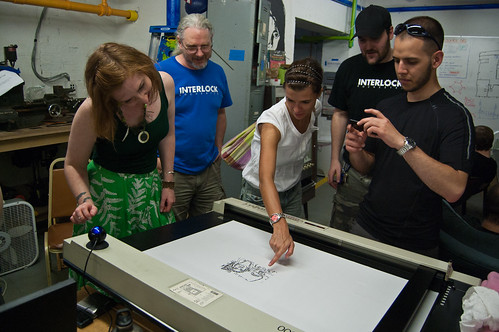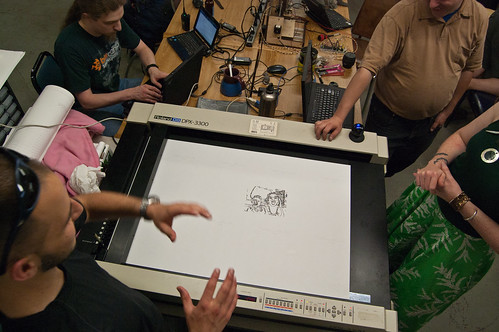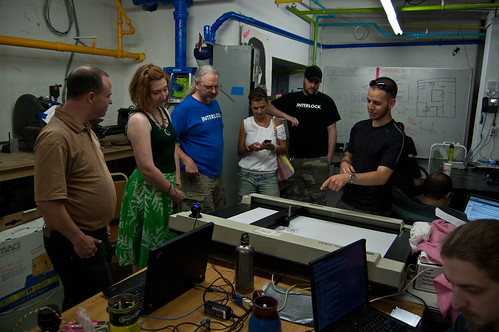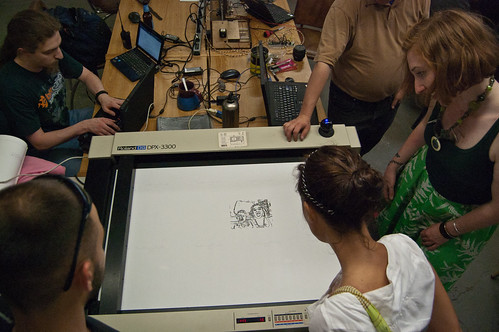I've been taking up quite a bit of space at Interlock lately with my new toy, a Roland DPX-3300 pen plotter... delivered via ebay from the magical futurepast of the early nineties. For those that are out of the loop with the past century, pen plotters are two axis robo-thingamajigs that basically pick up pens and draw on paper with them. They've been replaced by wide-format inkjet printers, but they used to be quite popular with anybody who wanted to plot out maps, blueprints, and other large diagrams.
Anyways, somehow I caught the plotter bug, even going so far as to learn a bit of python after finding this neat library called Chiplotle that handles the basics of creating and streaming artwork to plotters using their native language of HPGL. They have a mailing list where they often point out good plotter deals on ebay, and I foolishly/accidentally purchased perhaps the biggest flatbed plotter out there. 3x2 feet of plotting goodness, 100 pounds of steel and stepper motors delivered to my door by a grumpy UPS driver.
After realizing it doesn't fit anywhere in my house, I brought it to Interlock and have been tinkering with it since. The first step was to convert old dried out plotter pens into pen holders that would allow me to use Sharpies or other art pens with the device. That involved a quick trip to the lathe, which I hope to document more fully in the future.
Having figured out an inexpensive pen solution, I really wanted to make drawings based on webcam input... so I trawled around the internet and mailing lists until I could piece together a passable solution using OpenCV's python bindings, and a series of nerdy unixy commands (convert, autotrace, and pstoedit) to trace, mush, and output the data. You can find the relevant code up on my Ronald Toys Github repository.
Having conquered such menial tasks, I decided that the default route the plotter was taking was quite inefficient, with lots of time spent seeking back and forth between lines. My precious robot was spending half its time flailing due to a poorly composed hpgl file. Surely there was a better way.
Tada! I wrote a really dumb sort routine that attempts to minimize seeking between lines, instead of blindly accepting the order that autotrace wrote them in. You can see the difference in the following two time-lapse videos. The first shows the default route that autotrace produces, and the second is my optimized version.
Next step for this project: some more sophisticated drawing routines, including some cross-hatched shading, color, and maybe even some 3D input from a Kinect. Stop in for a Tuesday Open Night and maybe you can be a robo-portrait guinea pig!



